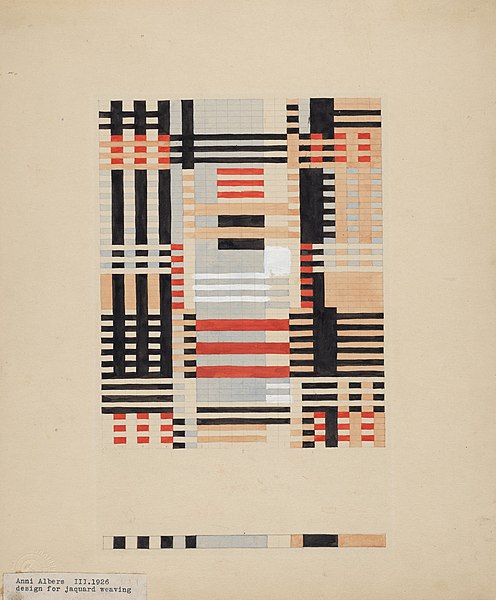Anni Albers was a German-Jewish visual artist and printmaker. A leading textile artist of the 20th century, she is credited with blurring the lines between traditional craft and art. Born in Berlin in 1899, Fleischmann initially studied under impressionist painter Martin Brandenburg from 1916 to 1919 and briefly attended the Kunstgewerbeschule in Hamburg in 1919. She later enrolled at the Bauhaus, an avant-garde art and architecture school founded by Walter Gropius in Weimar in 1922, where she began exploring weaving after facing restrictions in other disciplines due to gender biases at the institution.
Anni Albers
Design for Wall Hanging, 1925 (Harvard Art Museums)
Design for a Silk Tapestry, 1926 (Harvard Art Museums)
Design for a Jacquard Weaving, 1926 (Harvard Art Museums)
Textile arts are arts and crafts that use plant, animal, or synthetic fibers to construct practical or decorative objects.
Textile arts in ancient Egypt
This portrait illustrates the practical, decorative, and social aspects of the textile arts. Henry Frederick, Prince of Wales by Robert Peake the Elder, 1610.
Persian Silk Brocade. Persian Textile (The Golden Yarns of Zari - Brocade). Silk Brocade with Golden Thread (Golabetoon). Pattern and Design: Paisley Left and Right (Bote Jeghe), With Main Repeating Motif (Persian Paisley).
Textile, painted silk, 45 × 291⁄2 in. (114.3 × 74.93 cm), Qing Dynasty, China, mid-18th century, LACMA textile collection








